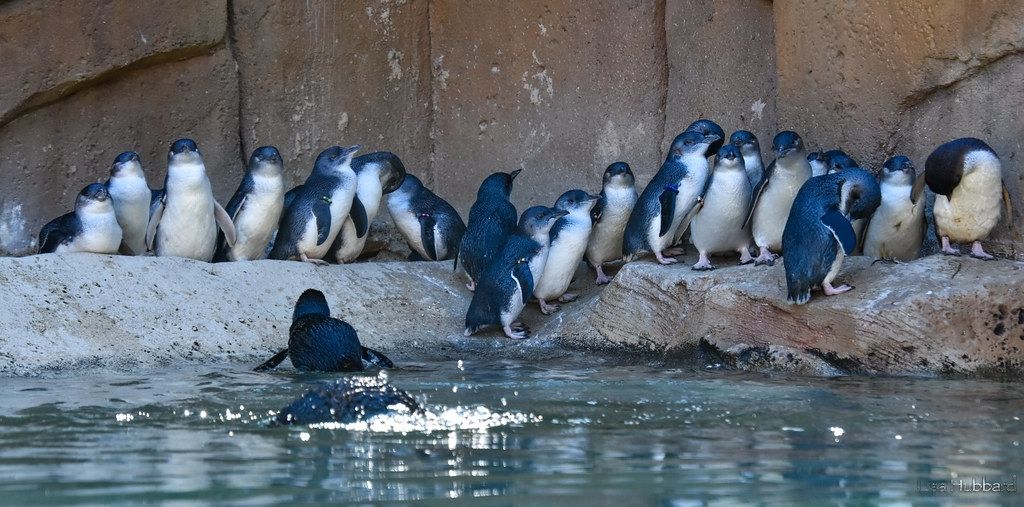
“
Penguins are captivating birds that charm both children and adults with their adorable waddle and sleek, black-and-white feathers. These flightless creatures have many surprising and lesser-known traits. Join us as we embark on an educational journey to discover 20 Fascinating Penguin Facts, exploring the unique aspects of their lives and the intriguing features that make them so special.1
1
”
Penguins are highly social animals, often living in large colonies called rookeries. In water, a group of penguins is called a raft, but on land, they're known as a waddle. Other fun names for penguin groups include colony and huddle. 1
Penguins have a special gland near their eyes called the supraorbital gland. This gland helps them filter out the salt from the ocean water they drink, allowing them to stay hydrated even in salty environments. 2

The Little Blue Penguin, also known as the Fairy Penguin, is the smallest penguin species. They grow to be about 16 inches tall and weigh around 2 pounds, making them adorable and tiny.
Penguins' black and white coloring is more than just stylish. The dark back and white belly serve as camouflage, protecting them from predators both above and below the water. 3
Penguins are master divers when it comes to hunting for food. Emperor penguins dive as deep as 530 meters, while Gentoo penguins reach 200 meters, and King penguins can plunge to around 350 meters. 4
Emperor penguins are known for their long journey to breeding grounds. They travel up to 75 miles across the ice to find the perfect spot to lay their eggs, enduring harsh Antarctic conditions. 5
Meet Major General Sir Nils Olav III, the world's highest-ranking penguin! This distinguished 21-year-old king penguin resides at Edinburgh Zoo in Scotland and recently received his lofty title. 6
Penguins have distinct calls that help them recognize each other. Each penguin has its unique call, much like a fingerprint, which helps them find their mate and chicks in crowded colonies. 7
Penguins have varying lifespans depending on the species. On average, they live between 15 to 20 years in the wild. However, some species, like the Emperor Penguin, can live up to 25 years, especially in protected environments. 8
Many penguin species are monogamous, meaning they mate for life. These loyal birds often return to the same partner every breeding season, sharing responsibilities like incubating eggs and feeding chicks. 9
Penguin chicks have a unique call that helps them communicate with their parents. This call is distinct enough that parents can pick out their chick's voice even in a noisy colony. 10
Penguins living in sunny regions have special adaptations to protect their eyes from the sun. They have a special gland that produces a secretion acting like sunscreen, shielding their eyes from the bright sunlight. 11
Gentoo penguins are the fastest swimmers among all penguin species, zipping through the water at a stunning 36 km/h—four times faster than any Olympic swimmer! 12
Penguins don’t have a traditional pregnancy. Instead, after mating, females lay eggs that both parents incubate. The incubation period typically lasts around 30 to 60 days, depending on the species, before the eggs hatch and chicks are cared for by both parents. 13
The oldest penguin fossils, dating back 62 million years, reveal the ancient origins of these flightless birds. These early penguins offer insights into their evolution and adaptation from their prehistoric ancestors to the modern species we see today. 14
Climate change is a significant threat to penguins, especially those living in Antarctica. Melting ice reduces their habitat and affects their food supply, posing a challenge to their survival. 15
The Yellow-Eyed Penguin is one of the rarest penguin species, found only in New Zealand. They are named for their bright yellow eyes and distinctive yellow headband, making them easy to recognize. 16
Penguins have a unique bathroom routine, with most species needing to poop every 20 minutes. This frequent behavior helps them manage their diet and waste while living in their often cold and demanding environments. 17
Different penguin species have unique nesting habits. For example, the Adélie Penguin builds nests out of stones, while the Gentoo Penguin lines its nest with pebbles and grass to create a comfy home. 18
Penguins have special adaptations to keep their feet from freezing. Their feet have a network of blood vessels that help regulate temperature, ensuring they stay warm even on the icy ground. 19


